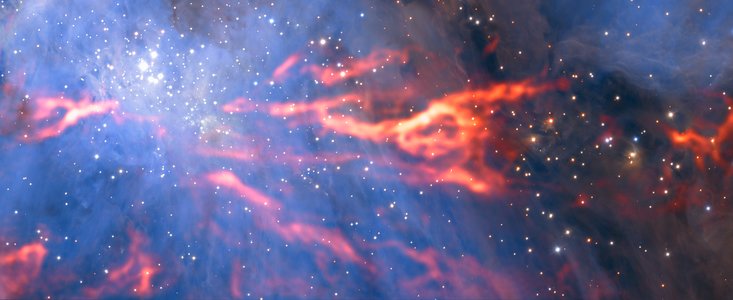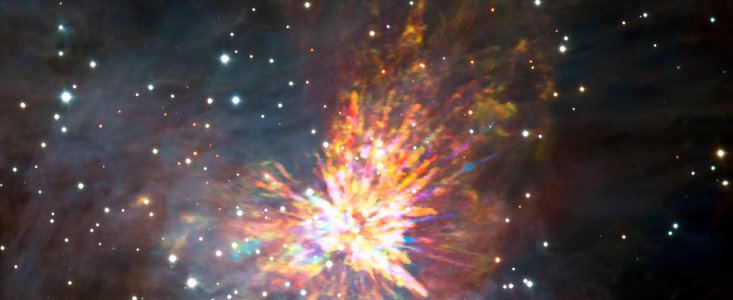
This spectacular and unusual image shows part of the famous Orion Nebula, a star formation region lying about 1350 light-years from Earth. It combines a mosaic of millimetre wavelength images from the Atacama Large Millimeter/submillimeter Array (ALMA) and the IRAM 30-metre telescope, shown in red, with a more familiar infrared view from the HAWK-I instrument on ESO’s Very Large Telescope, shown in blue. The group of bright blue-white stars at the left is the Trapezium Cluster — made up of hot young stars that are only a few million years old. Credit: ESO/H. Drass/ALMA (ESO/NAOJ/NRAO)/A. Hacar
New data from the ALMA and other telescopes have been used to create this stunning image showing a web of filaments in the Orion Nebula...
Read More









Recent Comments